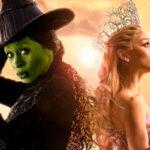

“A Clockwork Orange,” the iconic 1971 film directed by Stanley Kubrick, is a cinematic masterpiece that continues to captivate and intrigue audiences worldwide decades after its release. Based on Anthony Burgess’s dystopian novel, the film is a provocative dive into the disturbed mind of Alex DeLarge, a young delinquent who leads a street gang in a dark futuristic society.
Behind the facade of violence and chaos, “A Clockwork Orange” hides a series of fascinating curiosities that reveal much about the making of the film and its enduring cultural impact. By exploring these curiosities, we are invited to delve even deeper into the complexity and brilliance of this cinematic masterpiece.
1 – MICK JAGGER ALMOST PLAYED ALEX DELARGE
Anthony Burgess, the writer behind the work that served as the basis for the film, made an unusual sale of the adaptation rights to Mick Jagger, the famous member of the Rolling Stones, for a relatively modest amount of just… 500,000 dollars! Initially, Jagger had plans to star in the role of Alex DeLarge, with the other band members taking on the roles of the Droogs. However, he eventually chose to resell the rights for a considerably higher amount.
2 – FILM WAS BANNED IN SEVERAL COUNTRIES, INCLUDING BRAZIL
When “A Clockwork Orange” premiered in Brazil in April 1972, it was immediately included on the list of banned works by the military regime, meaning Brazilians could only watch it in neighboring countries such as Uruguay. Eventually, the film was finally released in Brazilian cinemas, but only for those over 18, and certain nude scenes were censored with black bars.
3 – DIRECTOR STANLEY KUBRICK WAS THREATENED WITH DEATH
In the United Kingdom, there was a withdrawal of the film due to a request made by Stanley Kubrick himself. After its release, the film received harsh criticism due to its extreme violence, resulting in a series of death threats directed at the director and his family. Faced with this negative backlash, Kubrick decided to halt the film’s distribution in the country, stating that it would only be re-screened after his death. It wasn’t until 2000 that the film was re-released in UK cinemas, now rated for those over 18.
4 – THE FIRST VERSION WAS SUPPOSED TO BE 4 HOURS LONG
The initial version of the film, uncut, was notably lengthy, running approximately four hours long. To shorten the film’s runtime, Stanley Kubrick enlisted the help of several editors, resulting in a final version at 136 minutes. What’s striking is that the remaining 104 minutes of material were not only left unused but deliberately destroyed by the director.
5 – LANGUAGE INVENTED BY THE DIRECTOR
One of the most distinctive features of the film is the peculiar language used by Alex and the Droogs, known as Nadsat, a mixture of English and Russian. Surprisingly, this “language” was created by the author of the book himself, Anthony Burgess. Initially, Stanley Kubrick was hesitant to use the dialect in the script, but eventually changed his mind and embraced it.
6 – IMPROVISED SCENE WITH ICONIC MUSIC FROM “SINGIN’ IN THE RAIN”
That iconic scene where Alex sings “Singing in the Rain” while committing the violent act against the writer and his wife is truly memorable, isn’t it? Surprisingly, this scene was largely improvised by the talented actor Malcolm McDowell! After four days of filming the scene, Stanley Kubrick was still not satisfied with the result and asked McDowell to improvise by dancing.
So, the actor performed the scene again, this time dancing and singing the only song that came to mind at that moment. The director was delighted with the idea, and to include the scene in the film, he had to shell out $10,000 for the rights to the theme song from “Singin’ in the Rain.”
7 – “SINGIN’ IN THE RAIN” ACTOR WAS UPSET WITH THE FILM
However, anyone who thinks that the famous scene was universally well-received is mistaken. According to various reports from the time, Gene Kelly, the performer of the song “Singin’ in the Rain,” was not pleased with how the song was portrayed in the film scene. He even ignored actor McDowell when they met in person years later.
8 – THE SNAKE BASIL
The presence of the snake, Basil, is exclusive to the film and is not present in the original story of the book. This occurred because Stanley Kubrick chose to include it in the production upon discovering that actor Malcolm McDowell had a fear of reptiles.
9 – A REAL DOCTOR ACCOMPANIED THE SHOOT
During the filming of the scene where Alex undergoes the Ludovico treatment, McDowell was anesthetized. Additionally, a real doctor remained by his side throughout the process to ensure that his eyes did not suffer damage due to prolonged exposure. Despite the precautions, the actor ended up with scratches on his corneas caused by the clips used in the scene.
10 – REFERENCES TO OTHER CLASSICS
Another fascinating curiosity is linked to the scene where Alex visits the record store. During the outing, we are treated to various musical references and even a subtle homage to the soundtrack of another film directed by Kubrick, “2001: A Space Odyssey.” On the shelves, we can spot classics such as “Magical Mystery Tour” by the Beatles, “Atom Heart Mother” by Pink Floyd, and “After the Goldrush” by Neil Young.
11 – DELIBERATE MISTAKES
Stanley Kubrick intentionally included several continuity errors in the film, such as changes in the position of plates on the table or the level of wine in the bottles, with the aim of confusing the viewer.
12 – REFERENCE TO A PAINTING BY VINCENT VAN GOGH
In the scene where Alex is in prison, walking in circles with other inmates, we can observe Kubrick’s appreciation for the art of painting. This is indeed a notable homage to Vincent Van Gogh’s painting titled “Prisoners Exercising,” painted in 1890. Had you noticed this reference before?
Exploring the curiosities behind the 1971 film “A Clockwork Orange,” we are transported into the backstage of a cinematic masterpiece that transcends time. From Malcolm McDowell’s brilliant improvisations to Stanley Kubrick’s meticulous details, each aspect reveals the complexity and genius behind this production. From controversy to admiration, “A Clockwork Orange” continues to fascinate and intrigue audiences decades after its release, leaving an indelible mark on cinema and popular culture. This work not only challenges narrative and aesthetic conventions but also invites us to reflect on timeless themes such as violence, free will, and the role of society in shaping the individual. Ultimately, “A Clockwork Orange” remains a testament to Kubrick’s visionary vision and the enduring power of cinema to provoke, question, and inspire.








